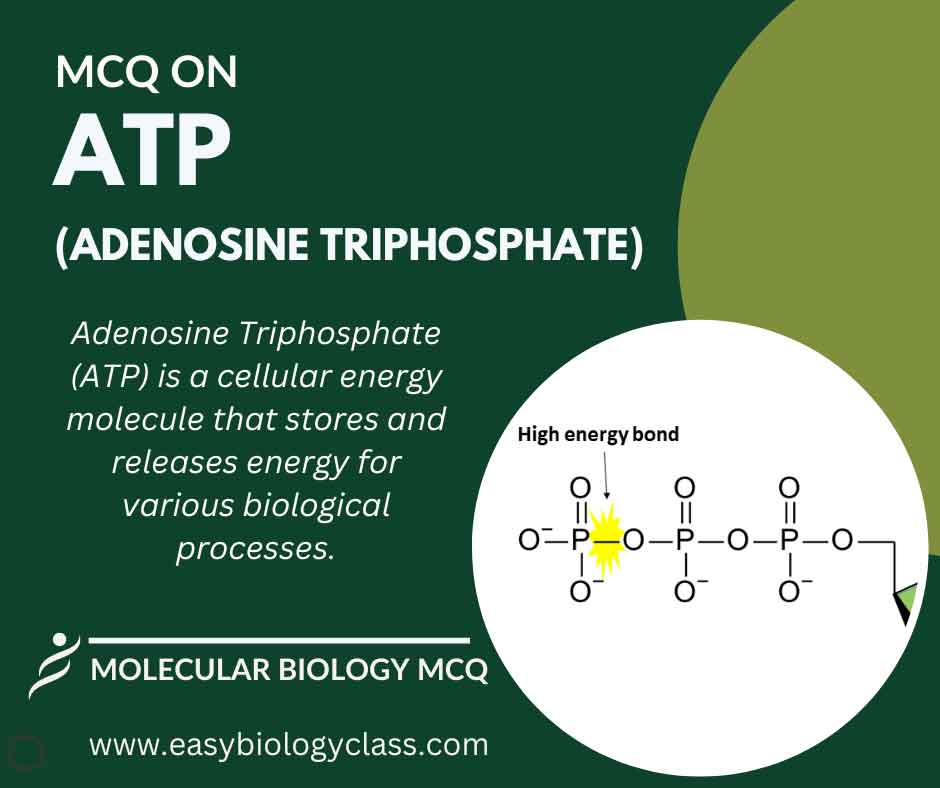Adenosine Triphosphate (ATP) is a nucleotide that serves as the primary energy currency in cells. It stores and releases energy through the transfer of its phosphate groups, crucial for various cellular activities, including metabolism, muscle contraction, and active transport processes. This is an MCQ on ATP Structure and Functions.
Molecular Bioloy Notes | Molecular Biology PPTs | Molecular Biology MCQs
<<< Back to Molecular Biology MCQ Page
You may also like...
NOTES QUESTION BANK COMPETITIVE EXAMS.
PPTs UNIVERSITY EXAMS DIFFERENCE BETWEEN..
MCQs PLUS ONE BIOLOGY NEWS & JOBS
MOCK TESTS PLUS TWO BIOLOGY PRACTICAL


